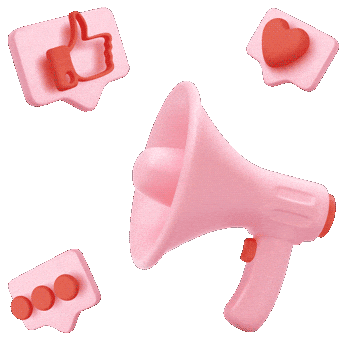What to sell during the crisis and how. Tips for publishers

For most nations, economic regression is not a threat but reality. Let’s avoid looking for the culprit (hey coronavirus!), wringing hands, and making any predictions. For the sake of reasonability, we will tell you how to sell online products and services in such hard times and not lose your income. These tips will work for — but not only for — those concerned with affiliate marketing, targeted and contextual advertising, and content monetization.
While mass media readers drown in unpromising numbers, we are here to cheer you up a little. Since the pandemic started, sales have been demonstrating growth across the globe. In Russia, for instance, the number of people shopping online (due to quarantine restrictions) gained at least 10 million people. Meanwhile, in the US, sales volumes have increased by a third for this dark period.
The conclusion is straightforward: the demand is in good spirits but has moved online: and online sales are the new Klondike. It’s a different matter that potential customers need special treatment during the crisis. Certainty and non-trivial tips are on us.
What people buy during a crisis and how
Let’s look at some COVID stats. Sales of electronic products, children’s and pets supplies, gadgets for hobby and art, and foods — have shown dramatic growth. As for food delivery, it came in a novel option for most people: and they now love it.
In terms of numbers, 57% of Vietnamese, 55% of Indians, and 50% of Chinese started to order foods online more frequently compared to the pre-pandemic times. Newcomers to the food delivery services are 31% of respondents in Italy, 27% in Russia, 23% in the US; 18% in Australia, Japan, and the UK.
Sales of clothes and luxury goods have dropped. So did the need for online booking of tickets (both transit and entertainment) and accommodation; and sales of online activity coupons.
Statistics suggest that the pandemic has made the transition from conventional consumption to online purchasing five years faster than expected. And business owners realize it: trying to recoup losses, companies go deeper and deeper online. Thus, quality of service improves, more new goods emerge online; more programs appear in affiliate programs; publishers have more opportunities to earn.
What to sell
- Experiment with verticals. Look for studies reporting what products go off the best (like this). What do people want during the pandemic? Let’s think it over.
- Online learning. To not waste time during the forced quarantine and stay relevant after the whole thing ends, people tend to hone their skills: they now have time for that. Private tutors come to schoolchildren and students.
- Freelance marketplaces, job hunting services. Businesses look for remote and freelance specialists, candidates jobs.
- Online healthcare. Delivery of medications, online physician consulting (Including therapies).
- Home leisure: board games, art, adult toys, gaming consoles, TVs.
- Financial services: loans, insurance, investing. By the way, financial services is probably the only vertical that has no problem with organic traffic. We’ll talk about it later.
- Home sports: exercisers, treadmills, yoga mats, dumbbells, wall bars.
- SaaS and remote communication software (also for business).
- Food, meals, and cooking sets delivery.
- DIY supplies. Can be helpful for people waiting through the pandemic at country homes.
- Online subscriptions and online events: online theaters, spectacle streams, educational webinars, online sports sessions.
- Online games. Streaming and let’s plays had been gaining traction before COVID-19, and now this vertical experiences a big boom of popularity.
Be careful and selective no matter the vertical. If you go with, say, sports nutrition, don’t think you can drive traffic to any product.
Example. Representatives of dietary supplements stores My Supplement Store argue that the demand for sports nutrition and fitness products has rapidly fallen after the COVID-19 pandemic broke out. On the other hand, immunity-enhancing vitamins see higher sales. In the food delivery industry, healthy and diet foods are in fashion now.
- Remember that the demand for services is usually less sensitive to economic disturbances than the demand for material goods — just because non-material goods don’t require shipping or stock monitoring. This makes financial offers, online games, and other services way more appealing.
- What could you do if you had been operating in verticals that have suffered most from COVID-19 and you are not ready to switch to another niche? Unleash your creativity. Offer discounts and promo codes; recommend consumers to buy for the future. This can work in travel: flight and trip tickets will cost less. And the benefit turns even more lucrative considering most airlines have eased up the terms of returning tickets. Another option is “buy now, get later:” invite your customers to buy a discounted spa studio voucher they can redeem after the pandemic ends.
If the sales are too poor, you may want to focus on growing the number of loyal users and enhancing trust-based relations with them. What you should never do is do nothing. Your product might be out of demand now. But you need to emphasize how valuable it will be when the world is done with the COVID thing.
Where to sell
- Don’t disregard email marketing. We’ve heard many times that email newsletters are dead and nobody reads them. If you support this opinion, just think of this: during the pandemic, people have gotten much more spare time as they don’t have to go to work or stores, and chilling out at restaurants became a very big deal. Therefore, people spend more time online — scrolling social media feeds — and what? — checking out email. So your message is almost doomed to be read. Email marketing has won back its position as an important element of the sales funnel.
And the tips for creating effective newsletters are still the same: an eye-catching subject, key message in the first lines, a button or link with CTA, and personalized address.
Everything you need to know about email marketing: Part I, Part II.
- The number of social media users sees organic growth in recent years. Currently, driven by the COVID-caused lockdown, people spend even more time on social media. This brings us to the obvious conclusion: sell on social media! Experts forecast that with a surge in the number of visitors and advertising and marketing budget restrictions (for one, Amazon almost ditched advertising on Google), clicks will get cheaper, so CPC will drop. And all this gives new opportunities for low-budget targeting and traffic arbitrage.
Let’s fix on targeting for a while. To set it up correctly, you may want to study how consumers behave during a crisis. For instance, surveys show that the pandemic mostly affects men: among male consumers, a spike in spending on foods and entertainment is much higher than among women. Following this insight, you may want to show ads to a more specific — male — audience. There are many other examples apart from this one. - Pay attention to Asia. As that region was first to get hit by both waves of the COVID-19 pandemic, it’s safe to suppose the Asian economy will recover earlier. That said, driving traffic to Asian (in particular, Chinese) programs may be profitable.
Actually, diversification of GEOs (regions) and world-targeted SEO optimization could be more than relevant today. People go online shopping, and physical borders fade away.
How to sell
- Host webinars and record videos. This is a way to sell that is especially relevant today: people love videos and tend to buy through them. The world of video content is full of opportunities: you can start a YouTube blog, shoot social media stories, embed videos into your website (by the way, both website pages and social media posts enjoy better search ranking if they include videos). Clips will work for how-to-use guides and for showcasing online products. Share screen with the audience and demonstrate how a program works.
- Offer here-and-now value to stimulate users to make a decision on purchasing. Not only do pessimistic economic forecasts whip up tension, but can be somehow prophetic. Chances are things will only get worse: people will earn less and publishers will be even more limited in the ways to earn.
So don’t tarry and use every possible chance to earn now. Take advantage of limited-time discounts and promo codes and calls to buy while the product is in stock and goes at the current price. And don’t forget about sales. - Use psychology. Specialists believe shopping is one of the ways to satisfy the fundamental human needs. Play up people’s wants — which are likely to manifest themselves more clearly during the pandemic.
For instance, leverage herd behavior: everybody buys, so should I. Or, use the person’s need for knowing they can control the situation even in such tough times and can choose what, where, and when to buy. Alternatively, appeal to the urge to take care of the close people or need for feeling
Leverage these subconscious desires in your ad campaigns. Encourage customers to care about their families and friends, make the right choice, get themselves essential goods or contact-free food delivery. Tell a personal story about how a product or service helped you. - Help your customers feel comfortable. The friendlier the interface, the faster and easier the journey to the purchase and the higher probability of buying.
- Optimize your website for mobile devices: most people shop using their gadgets.
- Provide more information about the products you sell. For instance, if you have a store website, products with more information and reviews and higher ratings are better indexed by search engines and look more appealing to the users.
- If you redirect users to the advertiser website, provide links to a specific product rather than the home page. Use deeplink for this.
- Offer users a variety of delivery (including contactless) and payment options. Alternatively, redirect users to stores that can offer those.
- Always timely respond to comments, questions, and criticism.
- Before starting cooperating with an advertiser, make sure to firm up important aspects. What delivery options are available, are there enough couriers, and whether contactless delivery is available; are there enough items in stock (bestsellers may run out of stock quickly during lockdowns); whether the budget can cover payouts to all publishers even in case of a sales boom; are there any other subtle yet important aspects — make sure to find out all of them. For one, some companies raised the minimum delivery cost during the pandemic; customers must hate such a decision — especially if they are not timely warned.
- Make for affiliate marketing. The CPA model offers plenty of benefits. You don’t have to create or manufacture any product. You are not involved in production, shipment, storage, or delivery. What you only do is advertise a product or service. The advertiser’s brand may already have a loyal audience: in such a case, you only need to slightly push warm customers to a purchase, giving them a handle to buy a product through your link.
Affiliate marketing allows choosing a model with the minimum investment required and risks. However, don’t expect you will gain millions straight away: you will have to work whatsoever.
Affiliate networks for beginners - Be careful. Be more careful than usual. Due to the COVID pandemic, some companies now struggle to ensure timely replenishment, so fast-moving-items may often be out of stock. Regularly check your links to make sure every product you promote is available. Customers will be highly disappointed if you advise them what they can’t buy right away.
- 35% of bloggers reported that their incomes have increased since the pandemic broke out. We believe most of those influencers are those who managed to adapt to the current agenda and situation. So if you deal with content projects (text blogs, social media or messenger blogs, YouTube channels), make sure you create valuable and relevant content. Here are some examples: texts about healthcare and mental wellness; video guides on using home gadgets and exercising at home; online game reviews and recommendations; home cooking video channels; selections of movies and podcasts; articles with tips on home office planning.
Such content sells well. Just make sure you recommend helpful goods that are consistent with your project and content. In the text with tips on combating anxiety, recommend resorting to an online therapist rather than taking out a loan or buying pets supplies.
Pro tip. Be careful with mentioning COVID-19. Most brands hold against using such a globally frustrating event in their advertising campaigns. And it’s explainable: none advertiser would like their brand name to be associated with such tragedy.
- Don’t bank on organic traffic. One could reasonably suppose people spend more time online and thus organic traffic grows. But it’s not how it really works. Studies show that unless you run a news or finance website, you will have to cope with an organic traffic setback. This means you do have to invest in paid traffic.
Anyway, it doesn’t mean organic traffic and SEO must be out of your scope of concern. Keep on improving SEO performance of your content, website, landing page, and other assets. Remember that this is a long-term investment that can back you up during the post-COVID period. - Revisit your planning. Not only you and we have seen stats depicting growth in online sales. More and more people want to sell and earn online. Thus, advertising (targeted, contextual) moderators experience higher loads: this is why it takes longer to approve ads. Design and submit creatives beforehand so you can start your campaign on time.
However, long-time planning is what one should put aside for now. The situation is highly volatile: you need to be agile, adapt to the changes, and monitor the demand and competition. We also recommend that you suspend your long-term projects and investments and focus on the current expenses that can produce results soon. - People want to save money. This is why discounts, cashback, deals, and promo codes are even more yielding than before. And it’s a matter of content again: tell people where and how they could save, providing links to specific products and services you mention.
- Take care of yourself. A healthy and happy publisher is a productive publisher.
When the pandemic ends — and we’re sure it will — people will continue to buy online. So our tips are not just hit-and-run lifehacks but good and reliable investments. Don’t give in to panic and keep working.







